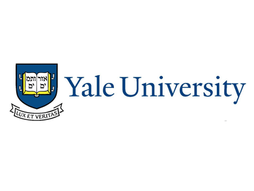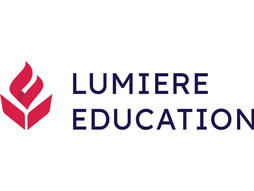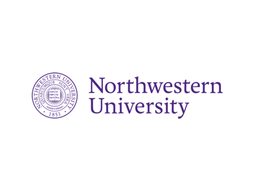10 NASA Internships for High School Students Interested in STEM
For high school students interested in STEM, early exposure to professional environments can be crucial for their academic and career journeys. NASA internships for high school students provide a solid opportunity to gain experience while working alongside industry professionals. These programs go beyond theoretical knowledge, allowing you to develop workplace skills and build connections within the scientific community!
While many organizations offer STEM internships, these NASA internships for high school students stand out for their comprehensive approach to youth mentorship and real-world project involvement. These programs will enable you to contribute to ongoing research initiatives while gaining insights into potential career paths in aerospace, engineering, and related fields. Interning at an established organization like NASA can also enhance your college applications.
We've carefully researched and compiled a list of 10 NASA internships for high school students interested in STEM. Our selection focuses on programs that provide substantive project work, meaningful mentorship, and clear learning objectives across different STEM disciplines.
The VASTS program allows high school juniors and seniors to take a NASA-developed STEM course. This competitive, free program begins with an interactive online learning experience. The virtual course features seven lessons on NASA, space exploration, and STEM fundamentals, followed by a final project. Based on your performance in the online course, you may be selected for a seven-day residential summer academy at NASA Langley Research Center! As a participant in the summer academy, you will engage in special STEM projects alongside NASA professionals. The program also offers mentoring and exposure to various STEM career paths.
Location: NASA Langley Research Center, Hampton, VA.
Dates: Week 1: June 21-June 27 | Week 2: July 12-July 18 | Week 3: July 26-August 1 (3 weeks).
Application Deadline: October 26.
Eligibility: Open to high school juniors and seniors who are U.S. citizens, residents of Virginia, have a GPA of at least 2.7, and have access to the internet.
The Langley Student Volunteer Program allows high school students to volunteer at NASA Langley Research Center. The program focuses on career development through work in fields relevant to NASA’s missions, such as engineering, science, and technology. As an intern, you will work closely with NASA mentors and professionals, performing pre-professional duties and learning about the Federal work environment. The program will allow you to gain insights into early career pathways while contributing to NASA’s projects. Since the pandemic, remote opportunities have been added, broadening student access nationwide.
Location: NASA Langley Research Center (In-person or remote).
Dates: Spring session: March 3 - May 30.
Application Deadline: February 14.
Eligibility: U.S. citizens aged 16 and older currently enrolled at least half-time in high school or higher education programs.
The SEES program is a nationally competitive internship that allows high school students to work alongside NASA scientists and engineers. As an intern, you will focus on projects involving NASA satellite data interpretation, exploring Earth systems, natural hazards, and climate science. The program includes both virtual and on-site components. You will complete online learning modules before a two-week internship at the University of Texas at Austin. You will then present your findings during a virtual symposium at the end of the program. Housing, meals, and transportation will be provided, and a limited number of travel scholarships will be available for those selected! To learn more about this program, check out our complete guide here.
Location: University of Texas at Austin.
Dates: Virtual: June-July 5 | In-person: July 6-July 19 | Virtual Symposium: July 21-22.
Application Deadline: February 22.
Eligibility: Open to U.S. high school sophomores or juniors at least 16 years old by July 5.
This internship at NASA’s Goddard Space Flight Center offers students the chance to work on sustainability, energy, and environmental engineering projects. As an intern, you can support various initiatives, including tracking energy and water conservation efforts, assessing NASA’s sustainability goals, and collaborating on designing a sustainable causeway bridge! You will gain experience in research, data collection, and communication while learning about benchmarking sustainable buildings and carbon footprint analysis. The role will involve working closely with NASA professionals and requires strong interpersonal and communication skills.
Location: Wallops Island, Virginia (Wallops Flight Facility).
Dates: Late May/Early June-August.
Application Deadline: February 28.
Eligibility: Open to U.S. high school juniors and seniors interested in sustainability or engineering.
In this internship, you will work on developing augmented reality (AR) and virtual reality (VR) applications to assist NASA’s scientists and engineers. These applications cover many scientific fields, including Earth science, planetary science, and astrophysics! Ideal candidates for this role have experience in programming, particularly with Unity (C#) and Unreal (C++), and skills in 3D content creation using software like Blender or Substance Painter. You will use cutting-edge technology in a collaborative environment.
Location: NASA Goddard Space Flight Center, Greenbelt, MD.
Dates: Late May/Early June-August.
Application Deadline: February 28.
Eligibility: Open to U.S. high school sophomores, juniors, and seniors with programming and 3D art skills.
HAS offers a STEM experience for high school juniors interested in space exploration. You will explore NASA’s mission through an online curriculum with interactive lessons on space exploration, Earth science, and more. As a HAS student, you will complete five modules, each culminating in STEM-based activities that cover topics like the International Space Station, the Solar System, and Moon to Mars missions. Top performers in the course are invited to a five-day virtual summer experience to work with NASA scientists to plan an Artemis-themed mission. A select group of high-achieving students will attend a week-long residential program at the Johnson Space Center. This free program may count as a half-science elective credit.
Location: Online and Johnson Space Center, Houston, TX.
Dates: October – July; 10 months (online course + summer opportunity).
Application Deadline: Early October.
Eligibility: U.S. citizens, Texas residents, high school juniors.
GL4HS is a four-week virtual program offering rising high school juniors and seniors a chance to explore NASA's space biology research. As an intern, you will explore omics-based bioinformatics, learning to analyze complex biological data such as genetic codes and computational biology methods. The program emphasizes scientific research skills through interactive learning modules, computer lab work, and a competitive research training competition. You will have the opportunity to network with NASA scientists, university professors, and industry experts. One student team may be selected to present their research at the American Society for Gravitational and Space Research (ASGSR) conference. This free program also offers a stipend to cover miscellaneous expenses!
Location: Virtual.
Dates: Summer (4 weeks).
Application Deadline: January (exact date TBA).
Eligibility: U.S. citizens, high school juniors and seniors (16+), GPA 3.0+
NASA's CCRI offers a summer internship for high school students interested in environmental science. As an intern, you will work with NASA scientists on research projects related to climate change, such as SnowEx and Soil Moisture Validation. You will be mentored by NASA experts and gain experience in data analysis, research techniques, and scientific communication. Although the program is hosted at NASA's Goddard Space Flight Center in Greenbelt, MD, some virtual opportunities may be available. This 6-week summer internship provides an introduction to climate research while fostering interdisciplinary skills. Read more about it here!
Location: NASA Goddard Space Flight Center, Greenbelt, MD (in-person/virtual).
Dates: June 30 – August 8 (6 weeks).
Application Deadline: February 28.
Eligibility: U.S. citizens, high school sophomores, juniors, and seniors.
NASA’s Office of the Chief Engineer offers a Knowledge Management internship designed for students interested in engineering, science, and communication. As an intern, you will work on capturing and documenting lessons learned from NASA projects, helping to ensure that knowledge is transferred effectively to future generations of NASA scientists and engineers. You will collaborate with experts in engineering, project management, and other fields to improve project execution through storytelling techniques, data gathering, and knowledge sharing.
Location: Virtual (Langley Research Center, Hampton, VA).
Dates: Typically from late May/Early June – August (10 weeks).
Application Deadline: February 28.
Eligibility: U.S. citizens, high school juniors and seniors.
The Glenn High School Physical Sciences and Technologies Internship offers students experience with NASA’s physical science experiments. You will assist with organizing and analyzing ISS flight data, inventorying flight hardware, and supporting lab experiments in fluid physics, combustion science, and soft matter. Depending on your experience, you may also work with college interns to assist with lab setup, data collection, and analysis. This program offers a chance to develop technical skills such as CAD, MS Excel, and database management while gaining exposure to NASA’s research. The internship is in-person and provides an opportunity to explore careers in physical sciences and engineering!
Location: Glenn Research Center, Cleveland, OH
Program Dates: Typically from late May/Early June – August (10 weeks)
Application Deadline: February 28.
Eligibility: U.S. citizens, high school sophomores, juniors, and seniors.
One other option—the Lumiere Research Scholar Program
If you’re interested in pursuing independent research, consider applying to one of the Lumiere Research Scholar Programs, selective online high school programs for students founded with researchers at Harvard and Oxford. Last year, we had over 4,000 students apply for 500 spots in the program! You can find the application form here.
Also check out the Lumiere Research Inclusion Foundation, a non-profit research program for talented, low-income students. Last year, we had 150 students on full need-based financial aid!
Stephen is one of the founders of Lumiere and a Harvard College graduate. He founded Lumiere as a PhD student at Harvard Business School. Lumiere is a selective research program where students work 1-1 with a research mentor to develop an independent research paper.









